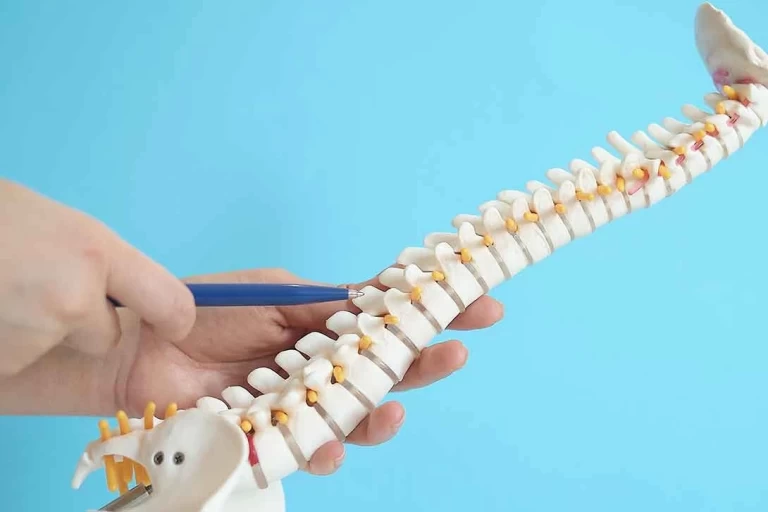
Chronic back pain is a pervasive issue affecting millions of people worldwide. Unlike acute pain, which is a direct response to injury and usually resolves on its own, chronic pain persists for weeks, months, or even years. Understanding the underlying causes and symptoms of chronic back pain is crucial in seeking effective treatment. Chiropractic care offers a non-invasive, drug-free approach to managing and alleviating chronic back pain, providing lasting relief and improved quality of life.
What is Chronic Back Pain?
Chronic back pain is defined as pain that persists for 12 weeks or longer, even after an initial injury or underlying cause of acute low back pain has been treated. It can affect any part of the back but is most commonly experienced in the lower back. This type of pain can significantly impact daily activities, mental health, and overall well-being.
Common Causes of Chronic Back Pain
Chronic back pain can stem from various sources, including:
1. Poor Posture: Sitting or standing incorrectly over long periods can strain the back muscles and spinal structures, leading to chronic pain.
2. Herniated Discs: When the soft material inside a disc pushes out through a tear in the tougher exterior, it can irritate nearby nerves, causing pain.
3. Osteoarthritis: This degenerative joint disease can affect the spine, leading to stiffness and chronic pain.
4. Spinal Stenosis: Narrowing of the spinal canal can put pressure on the spinal cord and nerves, resulting in pain.
5. Muscle or Ligament Strain: Repeated heavy lifting or a sudden awkward movement can strain back muscles and spinal ligaments, leading to chronic pain.
6. Underlying Conditions: Conditions like scoliosis, spondylolisthesis, and fibromyalgia can also contribute to chronic back pain.
Symptoms of Chronic Back Pain
Chronic back pain manifests in various ways, including:
1. Persistent Aching or Stiffness: Continuous pain in the lower back or along the spine.
2. Sharp, Localized Pain: Intense pain in specific areas, often after lifting heavy objects or other strenuous activities.
3. Pain Radiating Down the Leg: Sciatica, is characterized by pain that travels from the lower back down the leg.
4. Reduced Flexibility and Range of Motion: Difficulty in bending, twisting, or standing up straight due to pain and stiffness.
5. Muscle Spasms: Sudden, involuntary contractions of the back muscles, causing severe pain and discomfort.
Diagnosis and Treatment Options
Initial Assessment and Diagnosis: A thorough medical history and physical examination are essential to diagnose chronic back pain. Imaging tests like X-rays, MRI, or CT scans may be used to identify the underlying cause.
Common Treatments: Conventional treatments for chronic back pain include medications, physical therapy, and lifestyle modifications. However, these methods may only provide temporary relief and do not address the root cause of the pain.
Limitations of Conventional Treatments: Pain medications can have side effects and risk dependency, while surgery carries risks and may not always be successful.
Chiropractic Care for Chronic Back Pain
Overview of Chiropractic Care: Chiropractic care focuses on diagnosing and treating musculoskeletal disorders, particularly those related to the spine. Chiropractors use hands-on spinal manipulation and other alternative treatments to align the body's musculoskeletal structure, enabling it to heal without surgery or medication.
How Chiropractic Adjustments Help: Chiropractic adjustments involve applying controlled force to the spine's joints, improving spinal motion and the body's physical function. This helps reduce pain, inflammation, and muscle tension.
Benefits of Chiropractic Care:
- Non-invasive: Chiropractic care avoids invasive procedures, reducing recovery time and risk.
- Drug-free: It offers a natural approach to pain relief without the side effects of medications.
- Personalized Treatment: Chiropractors develop individualized treatment plans based on the patient's specific needs and condition.
- Holistic Approach: Chiropractic care often includes recommendations for exercises, dietary changes, and lifestyle adjustments to promote overall health and well-being.
Case Studies and Testimonials:
Patients who have undergone chiropractic care for chronic back pain often report significant improvements. Testimonials highlight the effectiveness of chiropractic adjustments in reducing pain and improving mobility, allowing patients to return to their daily activities.
Preventing Chronic Back Pain
Tips for Maintaining Good Posture:
- Sit with your back straight and shoulders relaxed.
- Use ergonomic chairs and equipment to support proper posture.
- Take breaks to stand and stretch during long periods of sitting.
Importance of Regular Exercise:
- Engage in low-impact aerobic exercises like walking, swimming, or cycling.
- Strengthen core muscles to support the spine and reduce back pain.
- Incorporate flexibility exercises like yoga or stretching routines.
Ergonomic Adjustments at Work and Home:
- Ensure your workstation is set up to promote good posture.
- Use supportive mattresses and pillows to maintain spinal alignment while sleeping.
- Avoid heavy lifting and practice proper lifting techniques when necessary.
Healthy Lifestyle Choices:
- Maintain a healthy weight to reduce stress on the back.
- Avoid smoking, as it can contribute to back pain by restricting blood flow and oxygen to spinal tissues.
- Stay hydrated and eat a balanced diet rich in nutrients to support overall health.
Conclusion
Chronic back pain can be debilitating, but understanding its causes and symptoms is the first step toward effective management. Chiropractic care offers a holistic, non-invasive approach to treating chronic back pain, addressing the root cause and providing lasting relief. By maintaining good posture, exercising regularly, and making ergonomic adjustments, you can prevent chronic back pain and improve your quality of life. If you're struggling with chronic back pain, consider seeking the help of a chiropractor to explore a natural, drug-free treatment option.




Leave a comment